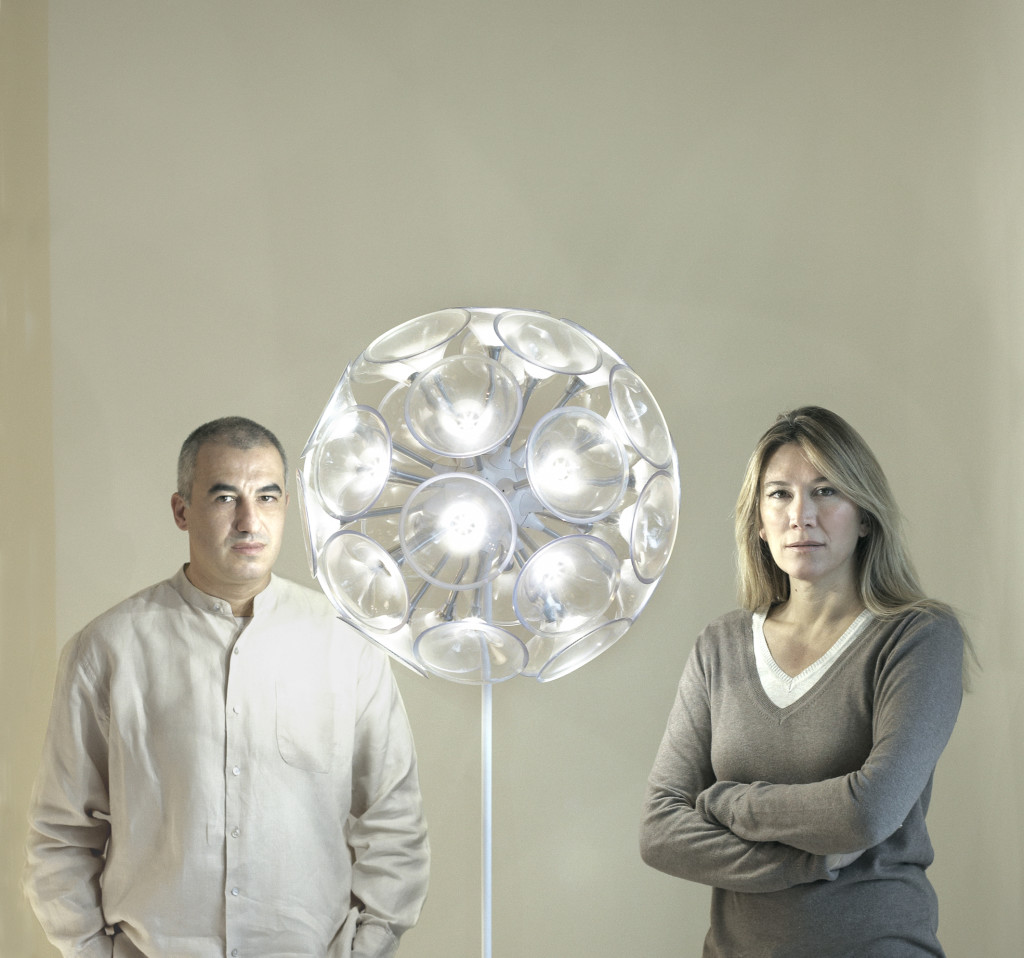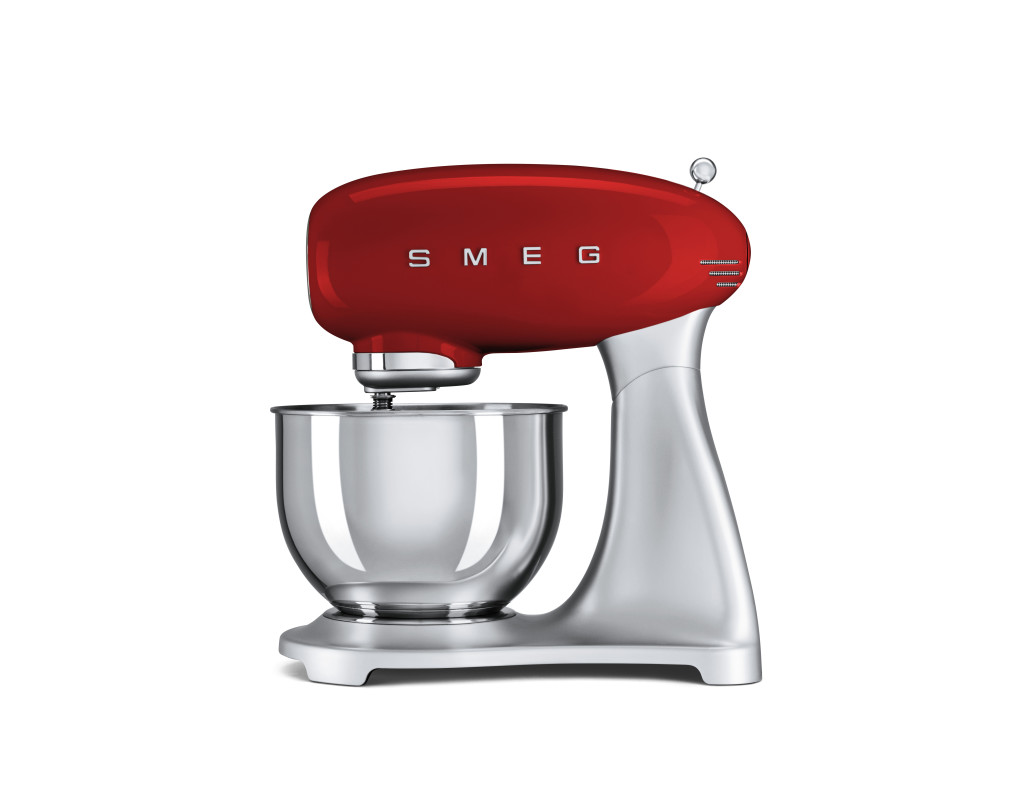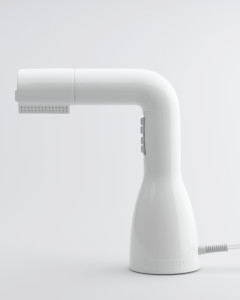
In the world of household appliances, what runs faster: technology or design? According to the Architect Raffaella Mangiarotti, winner of ID Award, present with her works both in Milan at the Triennale and in New York at MoMA, technology is present but, from the esthetic point of view, the visual revolution must still arrive
By Simona Carletti
 About twenty years ago, Raffaella Mangiarotti created with her colleague, Matteo Bazzicalupo, the Deepdesign studio, soon become place of a fruitful cooperation with the big brands of home appliances. Within the walls of Deepdesign an innovative washing machine was born, a model for Whirlpool, gentle on clothes that uses the centripetal force instead of the centrifugal one, awarded with the ID Award. Here an hair dryer was also conceived, branded Elchim, with lateral handle, which does not force a wrong posture during drying. And more recently, the new collection of Smeg’s small appliances has been designed, taking inspiration from the archetypical shapes of the first appliances of the Twenties. In the world of furniture too, Raffaella Mangiarotti and Matteo Bazzicalupo stand out so much that their Dandelion lamp became part of the Permanent Design and Architecture collection of the MoMA in New York. Despite the intense activity at Deepdesign, to the work of which the Milan Triennale dedicated the personal exhibition “L’anima sensibile delle cose” (The sensitive Soul of Things), Raffaella Mangiarotti also teaches and makes research at the Design Faculty at the Milan Polytechnic University. We asked her some questions, to understand what is the connection between technological innovation of household appliances and product design.
About twenty years ago, Raffaella Mangiarotti created with her colleague, Matteo Bazzicalupo, the Deepdesign studio, soon become place of a fruitful cooperation with the big brands of home appliances. Within the walls of Deepdesign an innovative washing machine was born, a model for Whirlpool, gentle on clothes that uses the centripetal force instead of the centrifugal one, awarded with the ID Award. Here an hair dryer was also conceived, branded Elchim, with lateral handle, which does not force a wrong posture during drying. And more recently, the new collection of Smeg’s small appliances has been designed, taking inspiration from the archetypical shapes of the first appliances of the Twenties. In the world of furniture too, Raffaella Mangiarotti and Matteo Bazzicalupo stand out so much that their Dandelion lamp became part of the Permanent Design and Architecture collection of the MoMA in New York. Despite the intense activity at Deepdesign, to the work of which the Milan Triennale dedicated the personal exhibition “L’anima sensibile delle cose” (The sensitive Soul of Things), Raffaella Mangiarotti also teaches and makes research at the Design Faculty at the Milan Polytechnic University. We asked her some questions, to understand what is the connection between technological innovation of household appliances and product design.

Which is the home appliance that, more than the others, changed the people’s life?
Maybe the fridge and the hob. Our lifestyle, without these two home appliances, would be very different.
Design and technology are running very fast in recent years: is this a sign of creativity and desire of quality or is it a market need, dictated by a strong competition?
Both the motivations coexist. Competitiveness requires a coexistence of technology, creativity and beauty.
Home appliances must be functional, but it is also true that they are more and more pieces of furniture. In your opinion, today are companies managing to reconcile these two aspects, functionality and aesthetics?
I think that to reconcile functionality and aesthetics is a target achieved by most manufacturers. More uncommon is, instead, to find in this area a company that considers aesthetics a fundamental principle to such an extent that it becomes a distinctive factor for the brand.
Conversely, does the customer coming into a shop look more to the aesthetic aspect or to the technology of a home appliance?
He looks at both. But the aesthetic involvement is often more immediate.
To distinguish washing machine and television, they use the terms “White and Brown Goods” in reference to their classic colors. Today, however, the appliances are of all colors, and you know something about, seen, for example, the Deepdesign’s projects for Smeg. What do you think of this explosion of creativity, also in a world, that of the household appliance, basically seen as “monotonous” and “little attractive”?
Color is an important element that helps to define the shape, to change the perception, to read in a different way the meaning and the value of the product. It is a too important element to be excluded. Through their color, products are renewed. At the moment it is applied almost exclusively in small domestic appliances, but its use will have greater development in the future even in major appliances. I think that “white and brown” are expressions destined to grow old.
Today, “Italian Lifestyle” and “Italian Design” have become recurring expressions together with “Made in Italy: is it a further awareness, at an international level, of the value of our design and taste?
The culture of the project and the Italian taste are important even when objects are no longer produced in Italy. You see less and less Made in Italy, but the fact remains that the Italian taste represents an important value in the international scenario.
Planned obsolescence: what do you think about? Is it an invention or is there something true in it?
I think there is something true, because we live in a society with a mature and saturated market.
When you realize an household appliance project, how much are you free to create its shapes and how much, instead, is its design linked to the internal technology of the device?
It depends on the customer. But basically, the work I do with Matteo Bazzicalupo in Deepdesign is above all oriented to the product innovation, which results in an attempt to break free from stereotypes. To give some concrete example, we have replaced the centrifugal force with the centripetal one in a washing machine. And we have designed shockproof glass thermos with soft and textile shapes, toothbrushes with rake-shape heads, hairdryers with dual air flow. They are all objects that question the typological recognition and match with new possibilities of use. This kind of approach to the product is that which gives us more trepidation: it is the emotion of those who explore new territories, question everything and reconfigure it again. It is basically what I think a designer should do. In addition, Deepdesign also follows the project of the ‘skin’ of the product: companies give us the internal components and we dress them. This is the most common way to work.
Appliances are more and more “intelligent”: what kind of scenarios will be opened in the near future?
The ‘Internet of Things is an emerging reality. There will be a further development towards a pervasive and interconnected system of relationships among objects, services and the network. Already the objects become recognizable at a distance (RFID), localizable (GPS) and become intelligent thanks to the fact that they are able to communicate data about themselves and access to the information aggregated by others.
If the intelligences will be applied to objects to make life easier and increase the security of those who use them, they will have a great development also in home appliances.
Which is your appliance project you are more linked to?
I mention two: the washing machine with centripetal force designed for Whirpool, because it was for me and Matteo Bazzicalupo the first experiment in conceptual innovation; and the most recent project of small appliances branded Smeg, not only for the developed products and for the success of the operation but also for the passionate relationship with the company.
Is there an household appliance you would like to design?
A device that performs a new function.
How much have the household appliances evolved, from the design point of view, in recent years and how much can still be done?
Under the functional and performance profile, there has been a great evolution. From the aesthetic point of view, in the small appliances, I think so much has been done; but in the major appliances there would be need to have the courage to implement a drastic change, considering all the relative consequences. There is today a market opportunity similar to that of the consumer electronics before Apple. The built-in appliances, good or bad, are objects with a modular form and as you quoted earlier, “monotonous”, but if we think about the free standing sector, they would have to reinvent a new beauty-oriented world. Technology already exists, but the shape misses.



